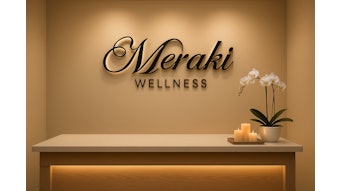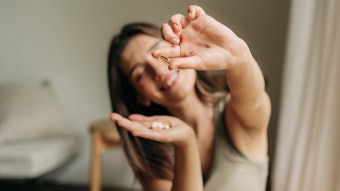
Communication is a learned skill that is important in all aspects of life. As estheticians, we help others subconsciously communicate by enhancing the way they look and feel. Most of what we radiate is the way we carry yourselves and how we say things, but communication is not just what we say. In any customer service industry, communication can be the “make-it or break-it” when it comes to client retention. Estheticians and other esthetic professionals are often educated on standard protocols; however, the art of communication is as important as the treatment itself.
The Presentation
Communication starts when we initially see somebody; the way one presents him/herself is the first impression they provide. There are many studies on the importance of first impressions and how they can have a significant impact on how people perceive one another.
To start, clients come in seeking a professional that they can trust to help manage their skin care, which means you have to look the part. Looking professional cannot be understated; wearing a lab coat and having long hair tied back, with a fresh face is necessary. It is not to say the esthetician has to have perfect skin, but a light application of makeup not overdone will show a clean, confident look. The treatment room should also match the perception of professionalism and cleanliness that the provider demonstrates. The room should be clean, organized and without excess clutter. It should also be warm, comfortable and welcoming; this can be achieved with dim lighting, relaxing music and soft colors.
The Approach
Now that the spa professional looks the part, they must also act the part. Be confident, welcoming and utilize the behaviors detailed below.
 Posture. Simply stand up straight, as opposed to being hunched over and dragging your feet.
Posture. Simply stand up straight, as opposed to being hunched over and dragging your feet.Smile. The power of a smile is more significant than most people realize. In fact, approaching a client with a smile will increase your chances of the interaction ending in a positive way.
Contact. A firm but not over powering hand shake can create a powerful introduction when given properly, not to mention a good way to introduce your touch. This along with eye contact exudes confidence and friendliness, putting the client at ease.
Mood. Energy can be hindered by your mood; therefore, it is important to leave any negativity behind. Of course, all of us have bad days (our clients do as well), but it is in our best interest and the client’s best interest to leave all personal problems at the door. In any profession that includes human touch (massage therapists, estheticians, hair stylists, nail technicians, nurses and physicians), one must pay extra attention to the feelings they portray. These can be felt by others more easily. When the service provider is in a positive state, it results in a more positive experience.1
Active Listening
Clients should have your focus for the duration of the appointment. The consultation stage is vital to gaining trust and starting a strong relationship. During the consultation, take the time to listen closely to their concerns and experiences. Identifying what the client wants is the first step to provide the proper treatment. Remember, beauty is in the eye of the beholder; it is only the client’s desires that matter. Ask open-ended questions to engage your client and set the tone that you are there to meet their needs. During the conversation, it is important to be attentive; this is where eye contact, the tone of your voice and a smile will reassure the client that you are dedicated to helping them achieve their goals.
The consultation is also when you have the client’s full attention, so make it impactful. When discussing treatment options, be positive and informative. Using positive statements is not as easy as one would think.
For example, when explaining to a client that a treatment may be uncomfortable,
Say: “This treatment will be amazing for your skin. If there is any discomfort please let me know.”
Don’t say: “This treatment typically burns, so I will be ready with a fan to ease your pain.”
Or, when recommending another treatment,
Say: “That is a great treatment; however, I have another treatment that would be perfect for your specific skin concerns.”
Don’t say: “That treatment would not be good for your skin, let’s find something else that would work.”
Remember that positive energy can be felt through your touch, your demeanor and your words.
Educating (or Providing Information)
After getting a sense of what the client wants, give the client specific information about your recommendations. Clients are coming to you for your knowledge, and they appreciate learning about their skin and how to care for it.
Simply stating, “I think dermaplaning would be the best choice for you” is not enough. Explain what is happening within the skin and why you chose a particular treatment.
For example, “I understand that you are concerned with dry skin and uneven skin texture. This can be a result of an accumulation of dead skin cells on the surface of the skin that is not shedding properly. You have said that you would not like to receive a chemical peel today since you have a big event coming up; therefore, I think dermaplaning would be a great option to eliminate the excess build-up of dead skin. This will also smooth the texture, making makeup go on easier and give the skin a more vibrant glow. Let me go through each step of the treatment as well as the risks and benefits to ensure this is the right treatment for you.”
As you can see, this is a much more effective way of helping the client understand what the treatment is and why you recommended it.
While attending a medical conference, I heard something that has stuck with me regarding communication.
Anything you tell a client before their treatment is seen as information, anything you tell them after their appointment is seen as an excuse.
Take, for example, this scenario: a client comes in for a superficial chemical peel and has heard from others that a peel will produce heavy, visible shedding. The esthetician didn’t take time before the treatment to explain that our cells are at a microscopic level, and the treatment will enhance exfoliation but may not produce visible peeling. This is all dependent on the individual’s skin, and if there is no shedding, it does not mean they did not get a quality treatment. Several days later, when the client doesn’t see shedding skin, she calls the office upset saying that the peel didn’t work. The esthetician, gives all of the information stated above after the fact. However, the client already feels unsatisfied, and now may take this as an excuse. If the esthetician communicated the possible reactions during the consultation, the client would not have left unhappy and time on both sides would have been saved.
Retention
 Now that you have won over your client, the lines of communication must remain open for optimal retention. In general, the best relationships are sustained with communication on a regular basis. Ongoing communication can be done through phone calls, e-mails, articles and even newsletters. Today, e-mails seem to be the most effective. E-mails should contain information about services and products that are available along with an educational element. For example, provide a statement on why topical antioxidants are important to maintain healthy skin. Although e-mails are the most common and easy-to-use form of communication, this does not mean that a personalized thank you note or a greeting card should be underutilized. Taking the time to send a hand-written note will go a long way when showing appreciation.
Now that you have won over your client, the lines of communication must remain open for optimal retention. In general, the best relationships are sustained with communication on a regular basis. Ongoing communication can be done through phone calls, e-mails, articles and even newsletters. Today, e-mails seem to be the most effective. E-mails should contain information about services and products that are available along with an educational element. For example, provide a statement on why topical antioxidants are important to maintain healthy skin. Although e-mails are the most common and easy-to-use form of communication, this does not mean that a personalized thank you note or a greeting card should be underutilized. Taking the time to send a hand-written note will go a long way when showing appreciation.Two-way Street
The demand for skin care continues to grow, and consumers appreciate having a trusted resource. Remember communication is a two-way street. Let your clients know that you are available for any questions or concerns they may have regarding their skin care needs. This may also prevent them from being misinformed by false advertising or through untrusted sources on the internet. Remember that regardless of the number of many clients you see, you need to treat each one as if they are your one and only. Your clients should view you as a trusted confidant that they can turn to at any time. Building relationships through the art of communication will result in client retention and ultimately a successful business.
References
- A Mehrabian, Silent Messages, 1st ed, Belmont, CA: Wadsworth (1971)











